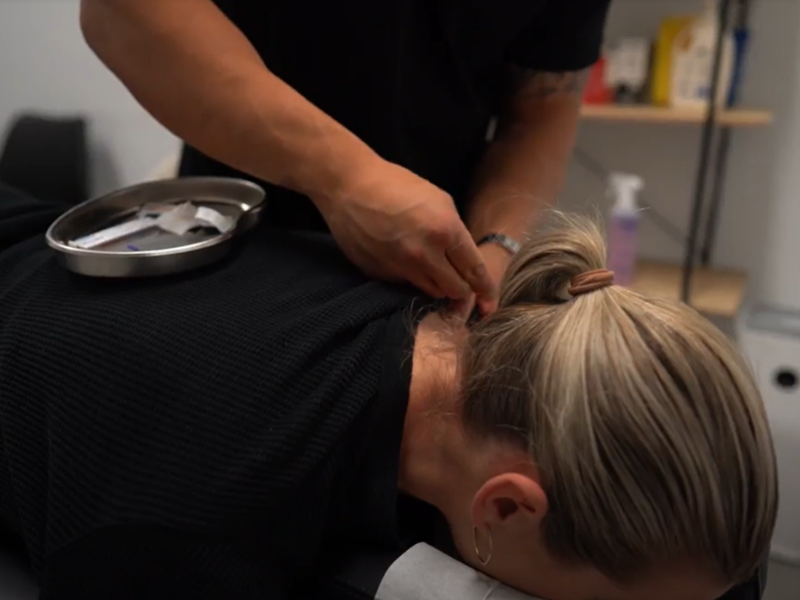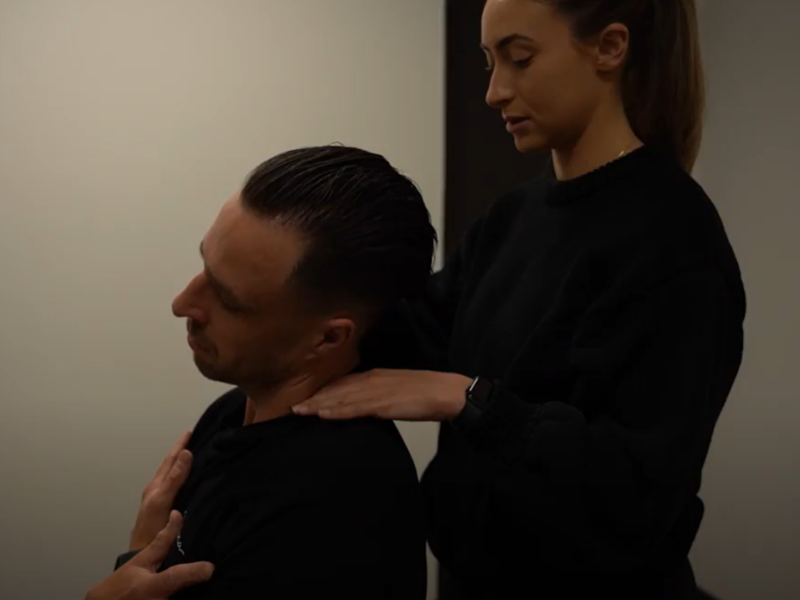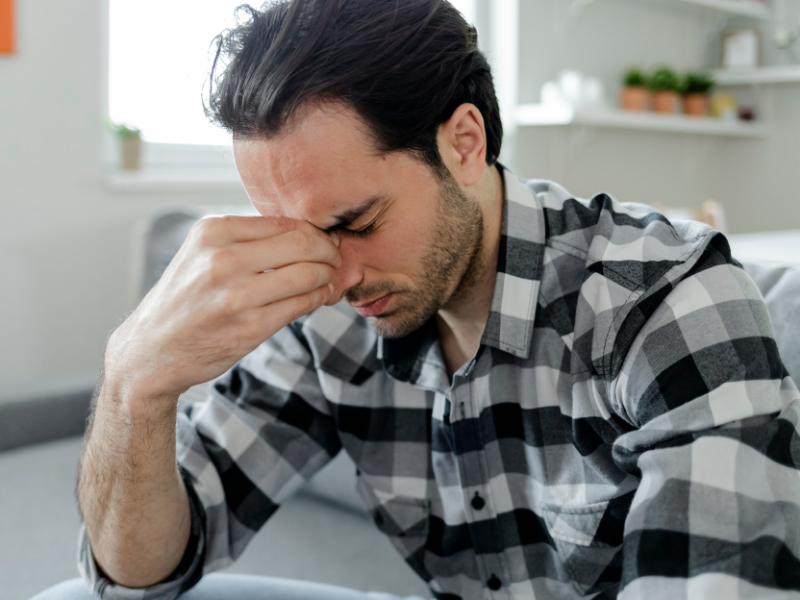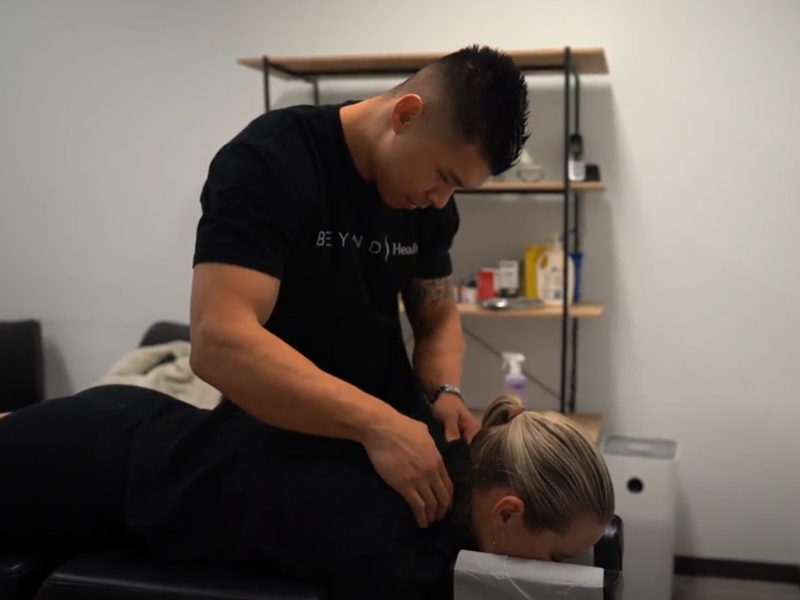
25 Apr 5 Different Types Of Headaches & How To Get Rid Of Them
Do you ever wake up with a headache? Or maybe you feel a throbbing sensation start in your temples as the day goes on. Regardless of when they start, headaches can be a real pain – literally! But did you know that there are different types of headaches? And that each type has its own set of symptoms and causes.
In this article, we’ll explore the 5 different types of headaches and what you can do to get rid of them. We’ll also provide some tips on how to prevent headaches from happening in the first place. So if you’re ready to learn more about headaches and how to shake them, keep reading!

Tension headaches
Tension headaches are one of the most common types of headaches. They often feel like a band or tightness around the head. Tension headaches can be caused by stress, poor posture, or holding your head in one position for too long. They can also be triggered by caffeine, alcohol, or lack of sleep.
Symptoms of tension headaches include:
- Dull, aching pain in the head
- Tightness or pressure in the forehead, temples, or back of the head
- Pain that feels like a band around the head
- Tenderness in the scalp, neck, or shoulder muscles
- Mild to moderate pain that is not disabling
- Sensitivity to light or noise
- Fatigue or difficulty concentrating
- Tension headaches can occur frequently, or even daily, for some people.
Treatment for tension headaches
To get rid of tension headaches, try taking a warm bath or shower, practising relaxation techniques such as deep breathing or meditation, or getting a massage. Over-the-counter pain medications such as ibuprofen or aspirin can also help alleviate pain. To prevent a tension-type headache, make sure you’re getting enough rest, practising good posture, and taking breaks from activities that require you to hold your head in one position for extended periods. Additionally, consider incorporating more physical activity into your routine, as exercise has been shown to reduce the frequency and intensity of tension headaches.

Cluster headaches
A cluster headache is less common than a tension headache but can be much more severe. They are characterized by a sudden onset of intense pain on one side of the head, often accompanied by redness and tearing in the eye on the affected side. The exact cause of a cluster headache is unknown, but they are thought to be related to abnormalities in the hypothalamus in the brain.
Symptoms of cluster headaches include:
- Intense, sharp pain on one side of the head, often around the eye or temple.
- Pain occurs in clusters, with multiple headaches occurring within weeks or months followed by periods of remission.
- A feeling of restlessness or agitation during a headache.
- Sensitivity to light and sounds.
- Nasal congestion or a runny nose on the affected side.
- Sweating or flushing on the face during a headache.
- Drooping eyelid or redness and swelling of the eye on the affected side.
- Tearing or watering of the eye on the affected side.
- Nausea or vomiting (less common).
Treatment for cluster headaches
Treatment for a cluster headache may include the use of prescription medications such as sumatriptan or oxygen therapy. While there is no surefire way to prevent cluster headaches, certain lifestyle changes may help reduce the frequency and severity of symptoms. These may include avoiding alcohol and tobacco, getting adequate rest, and maintaining a regular sleep schedule.

Migraine headaches
A migraine headache is another common type of headache, affecting approximately 15% of the population. They are often described as throbbing or pulsing pain, typically on one side of the head. Migraine headaches are frequently accompanied by other symptoms such as nausea, sensitivity to light or sound, and visual disturbances such as flashing lights or blind spots. The exact cause of migraines is not known, but they are thought to be related to changes in the brainstem and imbalances in certain brain chemicals.
Symptoms of migraine headaches include:
- Throbbing, pulsating pain: Migraine headaches are often described as pounding or throbbing pain that can affect one or both sides of the head.
- Sensitivity to light and sound: Many people who experience migraines are sensitive to light and sound, and may find that bright lights or loud noises make their headaches worse.
- Nausea and vomiting: Some people may experience nausea and even vomiting during a migraine attack.
- Aura: Some people have an aura before the start of the headache, which can last up to an hour. It can include symptoms such as visual disturbances (e.g. seeing flashing lights or zigzag lines), tingling or numbness in the face, hands or feet, and difficulty speaking or finding the right words.
- Dizziness: Some people may experience dizziness or lightheadedness during a migraine attack.
- Fatigue: Migraine headaches can be very draining, leaving people feeling tired and lethargic even after the headache has passed.
- Difficulty concentrating: Migraine headaches can also make concentrating or thinking difficult.
Treatment for migraine headaches
Treatment for migraines may include the use of prescription medications such as triptans or beta-blockers, as well as lifestyle changes such as avoiding triggers like certain foods, stress, or lack of sleep. To prevent migraines, consider keeping a headache diary to track your symptoms and identify triggers. Additionally, practising stress-reducing techniques such as yoga or meditation, getting regular exercise, and maintaining a regular sleep schedule can also be helpful.

Sinus headaches
Sinus headaches are caused by inflammation and pressure in the sinuses, which are the cavities in the face and skull bones. They are typically characterized by pain and pressure in the forehead, cheeks, and behind the eyes. To get rid of a sinus headache, over-the-counter pain medications such as ibuprofen or paracetamol may be helpful. Additionally, using a humidifier or taking a steamy shower can help alleviate sinus pressure and inflammation.
Symptoms of sinus headaches include:
- Pain and pressure around the eyes, cheeks, and forehead
- Stuffy or runny nose
- Loss of smell or taste
- Sore throat
- Fatigue
- Fever
- Cough
- Toothache
- Bad breath
- Tightness in the head or neck
- Nausea or vomiting
- Light sensitivity
- Difficulty concentrating or thinking clearly.
Treatment for sinus headaches
To prevent sinus headaches, consider avoiding allergens or irritants that can trigger sinus inflammation, such as cigarette smoke or environmental allergens. Keeping nasal passages moist with saline nasal sprays or rinses can also help reduce the frequency and severity of sinus headaches.

Exertion headaches
Exertion headaches are typically caused by physical activity, often occurring during or after strenuous exercise. They are characterized by a sudden onset of throbbing pain, usually on both sides of the head.
Symptoms of exertion headaches include:
- Throbbing pain in the head
- Pain that worsens during physical activity or exertion
- Pain that occurs during or shortly after physical activity or exertion
- Pain that lasts from a few minutes to several hours
- Pain that is felt on both sides of the head
- Pain that is accompanied by nausea or vomiting
- Pain that is worsened by coughing, sneezing, or bending over
- Pain that is relieved by lying down and resting
- Dizziness or lightheadedness
- Sensitivity to bright light or loud noise.
Treatment for exertion headaches
To get rid of exertion headaches, rest, hydration, and over-the-counter pain medications may help alleviate symptoms. It is important to avoid physical activity until the headache is completely resolved. To prevent exertion headaches, make sure to warm up and cool down properly before and after exercise, stay hydrated, and avoid overexertion, particularly in hot or humid weather.

Headache management
Chiropractic treatment may help manage headache pain, depending on the type and underlying cause of the headache. Chiropractors focus on restoring the proper alignment of the spine, which may help reduce tension and pressure on the muscles and nerves in the neck and head. Here are some ways chiropractic care may help manage headache pain:
- Spinal manipulation: Chiropractors use gentle, targeted adjustments to manipulate the spine and restore proper alignment. This may help reduce tension and improve circulation, which can relieve headache pain.
- Soft tissue therapy: Chiropractors may use massage, stretching, or other techniques to loosen tight muscles and reduce tension in the neck and head. This can help relieve headache pain and prevent future chronic headaches.
- Lifestyle advice: Chiropractors may offer advice on lifestyle changes that can help manage headache pain. This may include recommendations for exercise, nutrition, stress management, and ergonomics.
- Trigger point therapy: Chiropractors may apply pressure to specific points in the muscles that trigger headache pain. This can help release tension and relieve pain.
Overall, chiropractic care may be a safe and effective way to manage headache pain. However, it is important to consult with a chiropractor or other healthcare professional to determine the underlying cause of your headaches and develop a treatment plan that is right for you.

Living with headache pain
Headaches can be an unpleasant and inconvenient part of life, but with proper understanding, management, and prevention, they don’t have to disrupt your daily routine. If you experience frequent or severe headaches, consult with your healthcare provider to develop a treatment plan that works for you. In the meantime, remember to take care of yourself by practising good self-care habits, getting enough rest, and staying hydrated.






No Comments